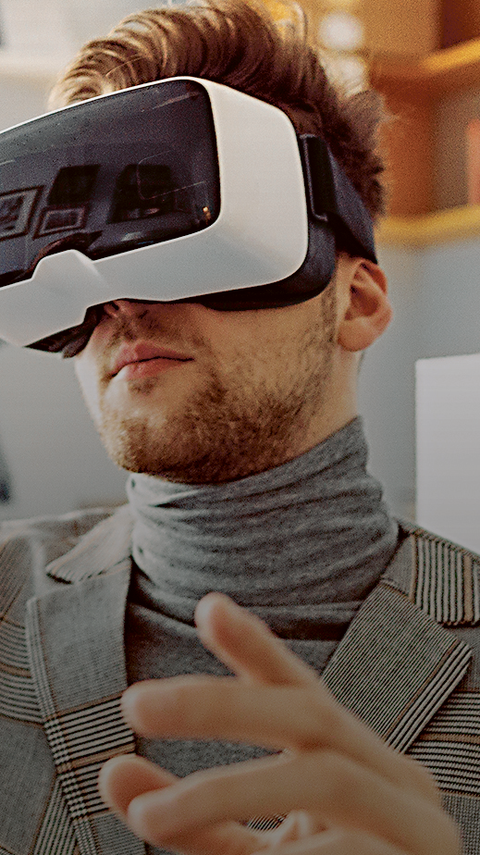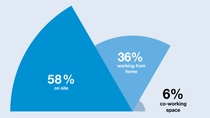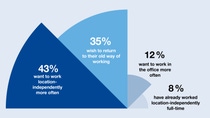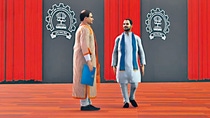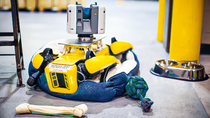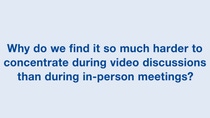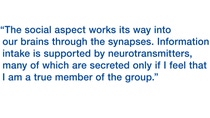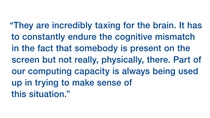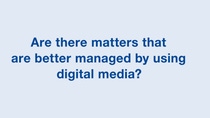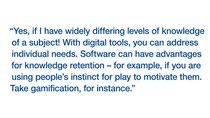Magazine
The digital boost
The coronavirus pandemic has changed the world of work. Companies and employees are harnessing the transformative power of digital technologies.
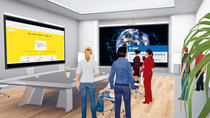
Early morning, Coralie Adam sits in a Los Angeles suburb and opens her notebook to steer her space probe a few meters closer to Bennu, a slightly rugged-looking asteroid some 321 million kilometers from Earth. It is all done very professionally. “Directing a real spacecraft from my own home is something completely different from sitting at a games console,” admits Adam, a flight navigator for the U.S. aviation and aerospace company KinetX. This is especially true now that her team are not sitting together in the control center, as they normally would, but are working dispersed throughout the USA because of Covid-19. However, thanks to digital technology and a lot of organization, Adam’s team were ultimately able to take rock samples – and to complete their mission for NASA’s OSIRIS-REx project after all.
The discovery that location-independent working is far from rocket science is an experience that Adam has shared with employees, as well as school and college students worldwide. While offices, factory floors and educational institutions were abandoned during the first wave of the global pandemic, work colleagues and students swiftly linked up with each other virtually from their living rooms or kitchens using video conferencing, chats or messengers.
Actively using digital ways of working also gives you the courage to approach matters differently.”
At BASF, for example, a total of one-third of the global workforce switched to working from home. People coped with this unprecedented situation better than one might have thought possible, thanks partly to internal campaigns to support digital working. “Actively using and experiencing digital working methods does something to you. The courage to do new things and to approach matters differently has grown significantly,” says Martin Stork, who heads Workforce Enablement at Global Digital Services, BASF, Ludwigshafen, Germany.
This positive experience has been echoed by many companies. In an internal survey conducted by McKinsey in the USA, 80 percent of employees questioned during the pandemic indicated that they liked working from home. More than two-thirds said they were more productive at home than in the office, or at least as productive. For this reason, tech giants such as Google and Facebook are going to rely entirely on working from home for the foreseeable future. Facebook CEO Mark Zuckerberg expects that half of his employees will not return to the office at all after the pandemic is over. And what about BASF? “We won’t launch ourselves into a purely virtual future, but into one that is flexible,” Stork says. “Personal contact will remain an important driver of our innovative strength.”
Several companies that regard digital as part of their DNA and have spent years testing methods for enabling people and machines to interact in the future acted swiftly and unbureaucratically at the height of the pandemic to make these methods widely available. One of them is TCS iON, the globally active IT subsidiary of India’s Tata Group, known to many as a steel and automotive giant. TCS iON long ago became an agile smaller craft accompanying the big industrial tanker. TCS iON has been active for years in digital learning in schools and universities.
Transforming learning
This past year, the free Digital Glass Room has enabled millions of Indian schoolchildren to continue taking part in lessons despite the coronavirus lockdown. “This digital learning platform,” TCS iO chief Venguswamy Ramaswamy says, “is more than just a temporary solution. The tool has the potential to fundamentally transform teaching and learning.” Instead of continuing with face-to-face teaching using digital tools, teachers and students could open up virtual possibilities in these digital rooms, depending on the subject and the format.
There, they can hold discussions, compose blogs, organize quizzes, and much more. Group sizes can be chosen freely, as can the time when the work is done. It is also intended to support teachers in developing an approach tailored to each student. The TCS iON CEO also plans to make the digital tools available to the entire company in order to offer tailor-made talent development for some 453,000 TCS employees worldwide.

New digital tools and ways of working are creating headaches for company strategists around the world, because even though working from home and mobile working have started up very smoothly in their companies, the drawbacks of constantly having the same form of screen-based communication are also slowly becoming apparent. The expression “Zoom fatigue” is already in circulation, describing a mysterious exhaustion that grips regular participants in video conferences. “The constant direct eye contact and the sense of being watched back through webcams have made participants feel under pressure, like on a stage,” says psychologist Janine Hubbard, Adjunct Professor at Memorial University of Newfoundland, Canada.
Does this mean that online meetings have become an instrument of relentless observation, from which humans almost instinctively look for ways to escape? There are now apps that let employees lighten the mood by inviting real llamas or goats into Zoom meetings. The animals even join the conference by video.

The value of informal contacts
Quite apart from such strange-seeming diversionary tactics, experts also see problematic consequences for completely digitalized business communication in the long term. “Many companies still underestimate the value of informal contacts,” warns Professor Martin Korte, a neuroscientist at the Technische Universität Braunschweig, Germany. Chance encounters, such as those that happen between colleagues at the coffee machine, he says, “go hand in hand with creative processes and allowing new ideas to form and develop organically.” Discussions that can be contentious, such as those surrounding a company’s strategy, “are extremely hard to choreograph online,” he adds. The solution to this problem, Korte thinks, could lie in hybrid formats, where online work and completely analog meetings complement each other. This is because without personal encounters there is a danger that identification with the company – and, ultimately, its own identity – could be lost. “We are talking here about a sense of cohesion, which constantly needs to be generated afresh,” Korte says.

Can the interpersonal closeness that is essential for team spirit also be generated virtually? Professor Blair MacIntyre answers that question with an almost categorical “Yes.” In March 2020, MacIntyre, who heads the Augmented Environments Lab at the Georgia Institute of Technology, USA, was obliged to move his renowned IEEE (Institute of Electrical and Electronics Engineers) Virtual Reality (VR) Conference onto the internet at short notice.
Visitors were able to move around in virtual rooms by means of avatars, or digital representatives. “With the constant improvements in VR headsets and sensors, this now feels akin to lifelike immersion,” MacIntyre says. However, it was still possible for only a small proportion of conference participants to interact at the same time using their avatars. “It is not yet possible technologically or in terms of computing power to bring several thousand participants together in one virtual room,” MacIntyre admits. In the meantime, he sees technological and coronavirus-related restrictions as an opportunity to rethink event formats – for instance, as an online conference moving around the globe from one time zone to another. One positive side effect of the coronavirus crisis is that people from the world’s poorer regions, who in the past could not afford to travel to his virtual reality conferences, would be able to take part.

Avatars encourage interactivity
VR, as a technology for the future, is also part of BASF’s digital toolbox. “We piloted a platform where employees were at least able to come together virtually and still hold workshops successfully during the coronavirus lockdown,” Stork says. Avatars of employees communicated in the digital sphere. “This meant they could also be more active for longer than in a traditional video-conferencing format, and they also felt much more closely involved,” he says.
The use of new tools at BASF is not limited to the office. In production, too, workers are now wearing HoloLens smart glasses. These enable users to see information and data streams from machines that would otherwise be hidden from view. “By using virtual reality, big companies could detach themselves from the ‘real world’ to a certain extent,” MacIntyre believes. “It is possible to zoom in as far as the molecular level of chemical processes or to gain a bird’s-eye view of a whole factory.”
For the aerospace engineer and global companies alike, the coronavirus has again given a fresh thrust to digitalization.
